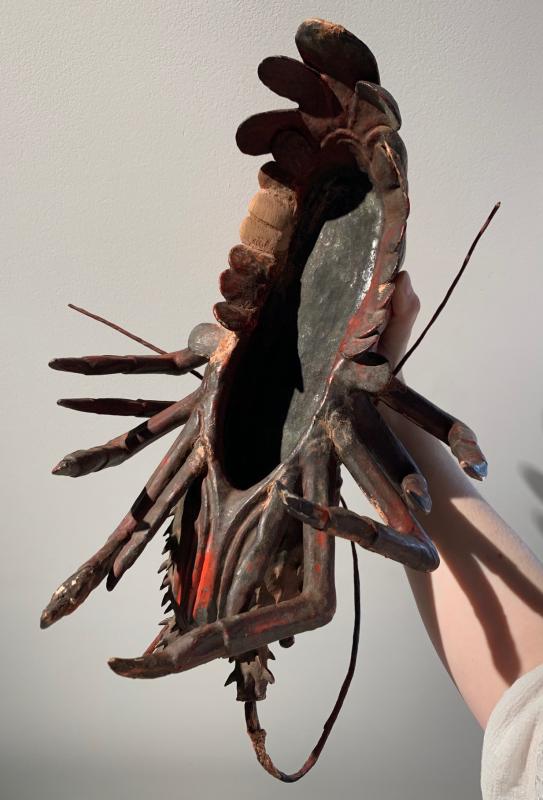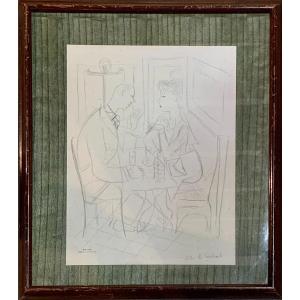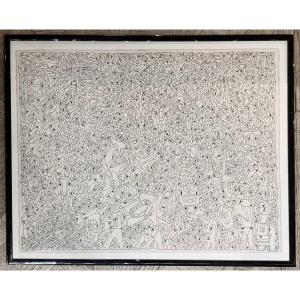Exceptional okimono in red lacquered wood representing a lobster from Japan (Ise'ebi).
Japanese work from the end of the 19th century (Meiji era).
The development of lobster, a symbol of longevity, experienced a revival in popularity in Japan during the 19th century thanks to the development of the art of Jizai okimono.
The jizai okimono consists of the sculpture of realistic animals whose bodies and limbs are all animated by articulations.
It was an art that originated in the late Edo period (at the end of the 18th century) when blacksmiths were faced with a decline in demand for armory. From this time, the lobster, with its numerous joints and its wavy back, was considered as one of the most difficult and demanding subjects to carry out, a proof of mastery and talent.
Most of the okimono sculptures representing lobsters are therefore articulated okimono jizai. It is rare to find a classic okimono sculpture of wooden lobster. The technique of lacquered wood, executed with great finesse, gives this great okimono a striking realism and a virtuosity of colors that metal work does not offer.
This work is proposed presented with a wooden support.
Accidents and restorations.
Length: 46 cm.
40 cm without the antennas.
Width: c. 28 cm.
29 cm with the base.
Height: c. 26 cm.
vs. 20 cm without the antennas.
vs. 38 cm with the base.
































 Le Magazine de PROANTIC
Le Magazine de PROANTIC TRÉSORS Magazine
TRÉSORS Magazine Rivista Artiquariato
Rivista Artiquariato